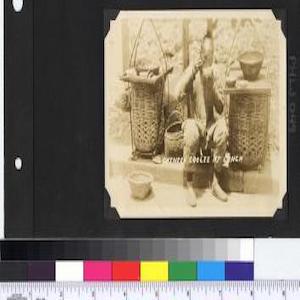Philippine Photographs Digital Archive
A catalogue consisting of 2,141 photographs held in a series of special collections maintained by the University of Michigan, the Philippine Photographs Digital Archive provides a striking visual record of the history of the Philippines from the 1870s to the 1920s. It is an offshoot of ‘The United States and its Territories, 1870-1925: The Age of Imperialism’ project that provides researchers, educators, and students with a new lens with which to view the complex relationship between the United States and the Philippines.
Visitors to the digital archive are presented with a straightforward website to navigate, with a search bar at top as well as various hyperlinks that lead them to specific collections or to the entire album of photographs available online. If they require instructions for navigating further or to explore more advanced functions, they can visit the ‘Help’ page. The ‘Search’ button links visitors to the advanced search function where they can keyword search and add filters to tighten their searches. ‘Portfolios’ links to what appear to be personalised collections put together by researchers utilising the University of Michigan’s entire digital collections with ‘Login’ giving you the ability to sign up and use that functionality.
Zooming in to the photograph collections, they are broken down into the following: Dean C. Worcester’s Photographs of the Philippine Islands; the Parker Hitt Photograph Collection; the Manila, Philippines Collection; Manilla, Philippines and Environs (Slides and Photographs); Scenes of Philippine History (Slides); General John G. Pershing Collection; Everett E. Thompson Photograph Collection; and the Tiffany Williams Photograph Collection. Between them, they contain shots of both ordinary and prominent Filipinos, of the built environment in and around Manila, of natural landscapes of Mindanao and Lanao province, and of the American military presence across the archipelago. The photographs themselves are high-resolution scans of images caught on film and are accompanied by a ruler for scale as well as relevant data such as the photograph’s numerical ID, its title, the original holding collection, its type, where the originals are held, its size, any inscriptions or markings attached to it, the creation date of the image, the relevant geographic details, its Library of Congress LocID, and metadata regarding the digital file.
The digital archive can be a wonderful resource for educators looking to add a visual element to their courses. In the first instance, for those teaching courses on Filipino history or the history of American empire—as represented in its occupation of the Philippines—it would be productive to search for relevant photographs and create a portfolio that can be shared with students during classes or asynchronously to provide a visual record of life if the Philippines under American rule. The other option for educators would be to select just a single image or a few images as part of an image analysis exercise, getting them to do research into the selected images as a means of placing the moment caught on film within its geographic and chronological context.
A simple yet powerful database that captures the intricacies of the relationship between the United States and the Philippines, the Philippine Photographs Digital Archive provides an important lens with which one can view changes in Filipino life over time. Researchers, educators, and students benefit immensely from initiatives such as these from universities and other repositories making their collections easily accessible online, particularly in the wake of the limits imposed on travel as a result of the COVID-19 pandemic.
